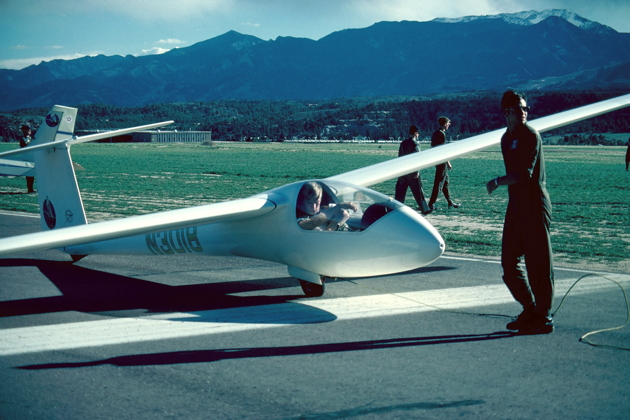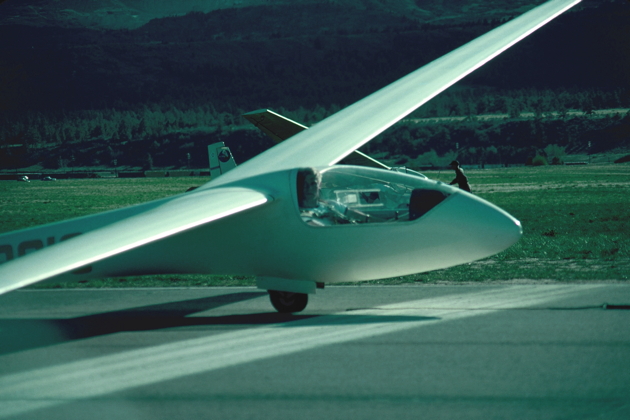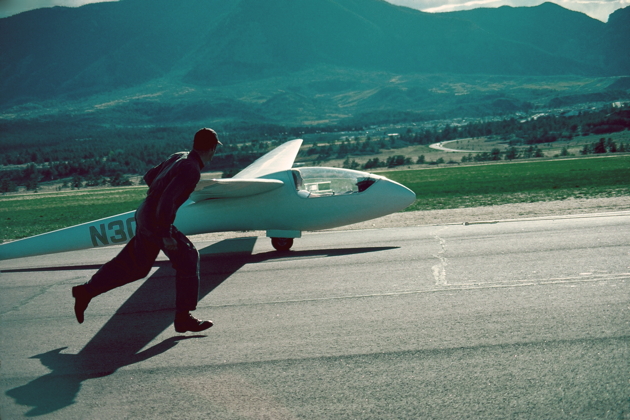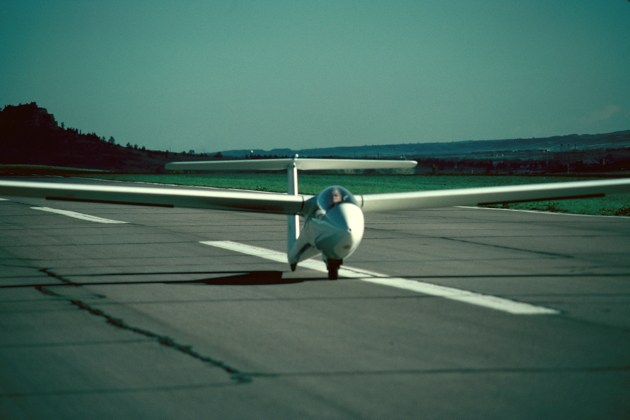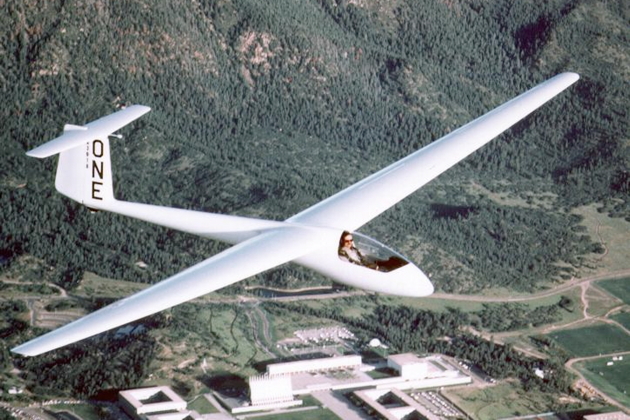FlightLog Archive
∟Aircraft Flown
Flying the Phoebus - May 1976
While attending the US Air Force Academy from 1972-1976, I had the wonderful opportunity to fly in the Academy's soaring program. Out of the 1000+ cadets in our freshman class, about 125 of us were selected to fly in the summer soaring program in 1973, allowing us to go from zero flights to our Glider Private rating in three intense weeks of summer flying.
Over the next year, about 25 of us were allowed to keep soaring to acquire our commercial and flight instructor ratings, enabling us to train freshman cadets during our junior to senior summer. We flew and trained on classic Schweizer sailplanes, SGS 2-33s, a lone SGU 2-22 (used for spin training) and a few 1-26s.
Around 1975, the Academy soaring hangar became the home for a beautiful Phoebus-C, which had been donated to the Academy for advanced soaring training. The Phoebus was derived from the Phönix, which first flew in 1957, the world’s first successful fiberglass sailplane. The Phoebus came from the same team of designers and used the same fiberglass and balsa wood sandwich technique. The A model, a Standard Class design with fixed gear, first flew in 1964. The B model, an A with retractable gear, appeared in 1967. The C model with retractable gear also emerged in 1967, but with a longer 17-meter wing and a tail drag chute. Total production of all models of the Phoebus was approximately 250.
A few of us cadet instructors began clamoring to fly the Phoebus, which unfortunately had only been flown by a few officer instructors that ran the Soaring program. When we pressed to understand the requirements, the Academy finally listed them: You must be a Certified Flight Instructor, with 500 sailplane flights. Three of us, my roommate Charlie Morgan, my friend Scott Anderson and I all had well over 500 sailplane flights as we ended our Senior year, so all of us pressed for a checkout.
The Academy Soaring program then added two new requirements: Five flights in a Schweizer 2-32 (a higher performance 2-seater), and five flights in a Schweizer 1-34, neither of which were in the Academy glider fleet. Not being deterred, the three of us proceeded to get checkouts and the ten required flights at Black Forest Gliderport, just east of Colorado Springs, using our meager cadet salaries.
Charlie, Scott and I all achieved our 2-32 and 1-34 flights by May 1976, with graduation looming on June 2nd. Scott and I received our approval and checkouts, and planned our first Phoebus flights on 14 May 1976. As we ran through our final cockpit familiarization, it became obvious that Scott had a major problem - he couldn't fit! Scott was a tall and lanky 6'4"+ instructor, but he and I both believed by squeezing in tightly, and with minimal cushions, plus motivation, he would just make it. But to no avail, we could not get the canopy to close securely, even with no cushions and a very contorted Scott.
Now the Phoebus was mine, for the rest of the day! I had been warned that the Phoebus was quite sensitive to pitch inputs on take-off due to its all-flying tail, from officer instructors who had flown it previously, and we had all witnessed some impressive pilot-induced oscillations on their earlier takeoffs. I was determined to make the cadet instructors look good, so I simply relaxed on the first takeoff, and had a very smooth and stable tow to altitude with the Phoebus handling quite nicely.
After hundreds of flights in 2-33 class 'family models', and a few flights in 1-34s, the Phoebus was a wonderful introduction to the smooth, quiet and responsive flying of a fiberglass sailplane. The Phoebus is really an easy sailplane to fly, and has no real surprises, with benign stall characteristics. The top and bottom spoilers are quite effective. The glider can be a little pitch sensitive in rough air, but it was no big deal.
I was able to catch some small thermals and enjoy the 42:1 glide performance, while running away from a few of the other Academy sailplanes that were airborne at the time. As I began approaching the Academy airfield, I again relaxed and was rewarded with a very smooth pattern, final and landing.
Since I was the only cadet now checked out, I was able to fly the Phoebus again on the 14th, plus three more flights on May 19th, ending up with five wonderful flights in this gem before I graduated on June 2nd.
Flying the Phoebus just before graduation was a great experience, and built my confidence to do well in USAF pilot training over the next year, where I was able to secure the only F-15 to be awarded from my pilot training class of 65 students.
Scott Anderson was never able to fit in the Phoebus, but did fly F-4s and F-16s in the USAF for years. He retired as an MD-80 Captain for Delta, and has set many Georgia state records in his ASW-19 and Ventus B sailplanes.
My roommate Charlie Morgan also flew the Phoebus as a cadet, then flew B-52s and SR-71s in the USAF, and flew Nanchangs in later years in Louisiana.
Epilog
As of 2025, N3018 is still flying, registered in Colorado to the current owner, Jon Stark, flying out of the Kelly Airpark (CO15), north of Colorado Springs.
Jon Stark provided some excellent background on N3018:
"The ship first came to the U.S. for the 1970 World Championships in Marfa, TX. It was donated to the Academy by a fellow whose name was - I think - George Ahrens, who as I recall was affiliated with the Ferrari auto racing team. It had a hard time at the Academy, with two landing accidents that broke the landing gear mounts. The unconfirmed story for the last one was that some hotshot ace-of-the-base officer came to visit, said "I want to fly THAT one", and being used to the sight picture for an F-4 Phantom, landed it several feet too high (that is, as if it were much taller than it is, so that it dropped in several feet) and the bulkhead failed. My logs have the form 337s for the repairs. This was said to account for the reputation of being hard to fly that led to the tough qualifications that the Academy set for it (CFI, 500 flights, etc.; the joke around Black Forest was that a lunar landing was on the qualifications list)."
"Eventually, they realized that nobody was flying it so they released it to the CAP. It went to a CAP chapter in Indiana for a while, where they flew it a little, but soon also realized that it didn't fit either a training mission or a search and rescue mission, so it was sold into private hands. It then went to an architect at the Albuquerque Soaring Club (Gordon Hall), who planned to fix it up and fly it, but didn't. I bought a half interest from him, took it up to Black Forest, fixed it up, and then bought out his share. When I got it, it still had the blue open metal trailer with yellow Air Force registration numbers and no license plate. The push tube for the elevator had been bent in compression in one of those incidents, which shifted the elevator travel several degrees and made it a handful on tow. I fixed that, added a nose hook to calm the pitch sensitivity on take-off, and put a bit of lead in the nose to make up for my light weight, and it flies delightfully now."
"The picture over the Academy was the November 1989 calendar shot for the SSA. It was taken about 6:30 in the morning at 13,000 feet by Bill Stewart while he rode in the back seat of a Black Forest towplane with the camera and his hands stuck out the window. He wasn't sure he'd actually gotten the shot, because his shutter release finger was so numb from the cold."
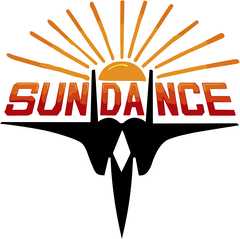 KASPRZYK
KASPRZYK